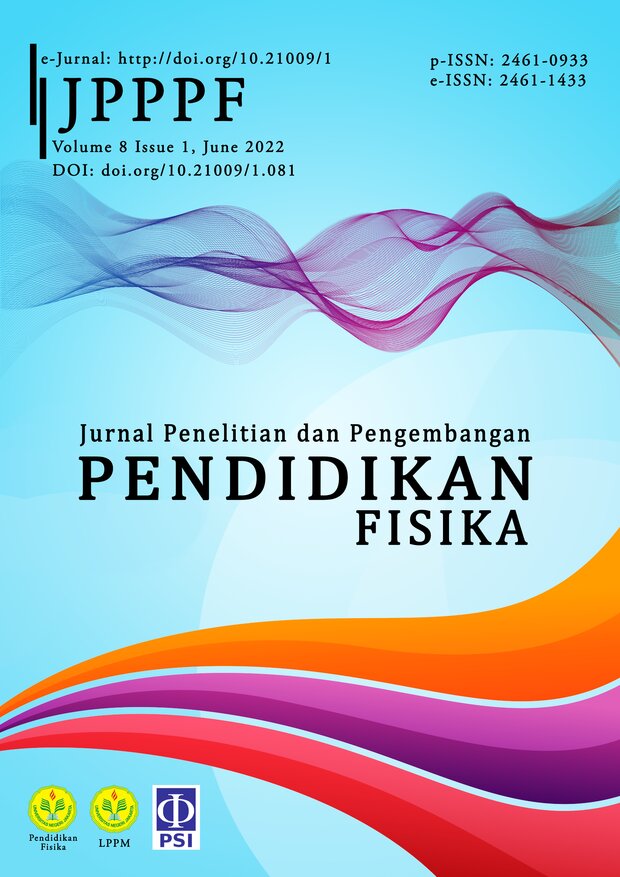The Development Research: Assessment Instruments of Science Literacy Based on Minimum Competency Assessment (AKM) Level 4th for Solar System Concepts
DOI:
https://doi.org/10.21009/1.08111Keywords:
literacy assessment, minimum competency assessment, solar systemAbstract
The literacy competence of students is getting lower. The Ministry of National Education issues literacy in schools regulations and develops literacy assessment formats to improve it. It continues to experience improvements because it can still not boost student achievement. AKM is the latest student literacy competency assessment policy. Considering that the program is new and will be carried out next year, the number of question bank on AKM books is still limited. However, a design guide document for the development of the AKM test was launched. Therefore, good quality literacy tests are still needed. This development research aims to produce a valid and reliable AKM-based test package for the Solar System’s Reading Science Information Literacy level IV concept. And then, at the survey stage, respondents worked on the test package in the e-learning format. The test’s scoring will be used to describe the student literacy competency profile per the design guidelines for developing AKM questions. The results indicate that: (1) the AKM tests package that has been compiled is valid and reliable; (2) only 41 out of 181 students accessed the survey; (3) their highest achievements are the sufficient category, while the less category is most dominant; (4) the description is that their competence is only at the level of finding information, sub-competencies: accessing and searching for information in the text; search and select relevant information. The highest competence is understanding, sub-competence: comprehending text literally; explaining the main idea and some supporting ideas in the information text. It is competence at level 2 on the AKM test, the ability of students in grades 3 - 4 elementary school.
References
Azizah Rifca Farih, Imam Suyitno, S. H. S. (2017). Ungkapan Tradisional (Kramanisasi): Representasi Seksualitas dalam Dongeng Pengantar Tidur Anak-Anak Masyarakat Jawa. Jurnal Pendidikan: Teori, Penelitian, dan Pengembangan, 2(1), 1520–1526.
Danandjaja, J. (2002). Folklor Indonesia. Ilmu Gosip, Dongeng, dan Lain Lain. Jakarta: Pustaka Utama Grafiti.
Dundes, A. (1965). The Study of Folklore. Engelwood Cliff: Prentice Hall.
Hadiyanto & Sovia Wulandari. (2018). Ungkapan Tradisional Masyarakat Kerinci: Kajian Bentuk dan Telaah Makna. Titian: Jurnal Ilmu Humaniora, 2(2), 229–252.
Hasanadi. (2019). Refleksi Nilai Budaya dalam Ungkapan Tradisional Masyarakat Lubuklinggau Sumatera Selatan. Jurnal Penelitian Sejarah dan Budaya, 5(1), 77–99.
Jamshidian, E. & M. R. (2012). Translation Analysis and Assesment of Poetry Discourse: Extra-Textual Meaning in Persian and English. The Journal International Social Research, 5(21), 154–167.
Khan, R. (2014). Stylistic Analysis of Wordworth’s Poem “To a Butterfly.” International Journal of Academic Research and Reflection, 2(1), 10–14.
Lubis, I. S. & F. M. (2020). Fungsi Ungkapan Tradisional pada Peribahasa Kutai. Judika (Jurnal Pendidikan Unsika, 8(2), 191–202.
Luxemburg, Jan van, et al. (1984). Pengantar Ilmu Sastra. Jakarta: Gramedia.
Luxemburg, Jan van, et al. (1989). Tentang Sastra. Jakarta: Intermasa.
Numiwati & Fahidah. (2018). Makna Ungkapan Tradisional dalam Masyarakat Bima. Jurnal Ilmiah Telaah, 3(2), 123–136.
Nurgiantoro, B. (2014). Stilistika. Yogyakarta: Gadjah Mada Univesity Press.
Rahima, A. (2017). Interpretasi Makna Simbolik Ungkapan Tradisional Seloko Hukum Adat Melayu Jambi. Jurnal Ilmiah Universitas Batanghari Jambi, 17(1), 250–267.
Ratna, N. K. (2016). Stilistika. Kajian Puitika Bahasa, Sastra dan Budaya. Yogyakarta: Pustaka Pelajar.
Sihwatik. (2017). Kajian Bentuk, Fungsi, dan Makna Ungkapan Tradisonal Wacana Sorong Jerah Aji Krama di Kabupaten Lombok Barat dan Relevansinya dalam Pembelajaran Mulok di SMP. Retorika: Jurnal Ilmu Bahasa, 3(3), 93–103.
Sudjiman, P. (1993). Bunga Rampai Stilistika. Jakarta: Grafiti.
Syarifuddin. (2009). Nilai Waktu dalam Ungkapan Tradisional Bugis di Lombok: Sebuah Kajian Bahasa dan Budaya. Mabasan, 3(1), 141–159.
Teeuw, A. (1983). Membaca dan Menilai Sastra: Kumpulan Karangan. Jakarta: Gramedia.
Wijaya, Satria, Sahid Teguh Widodo. (2018). Ungkapan Kearifan Kultural tentang Aturan Adat Bujang Gadis dan Kawin dalam Undang-Undang Simbur Cahaya Kesultanan Palembang 1824. Kredo, 2(1), 98–111.











